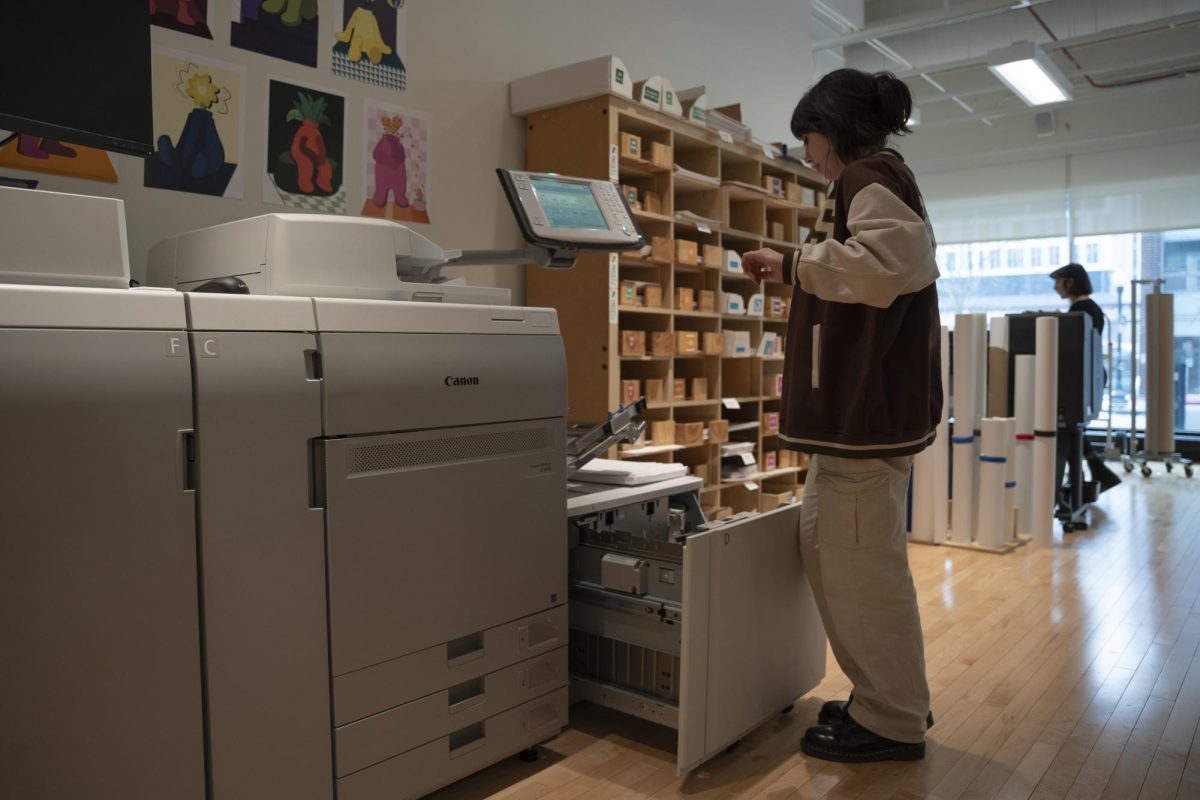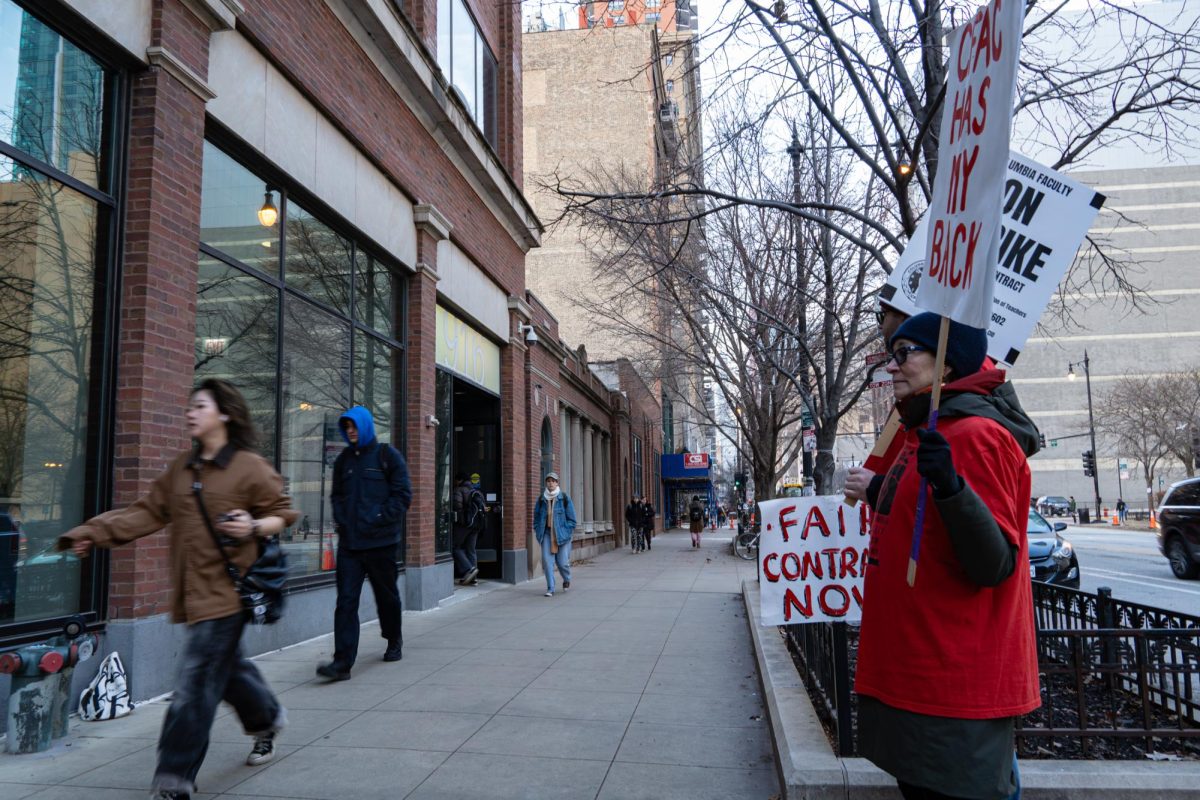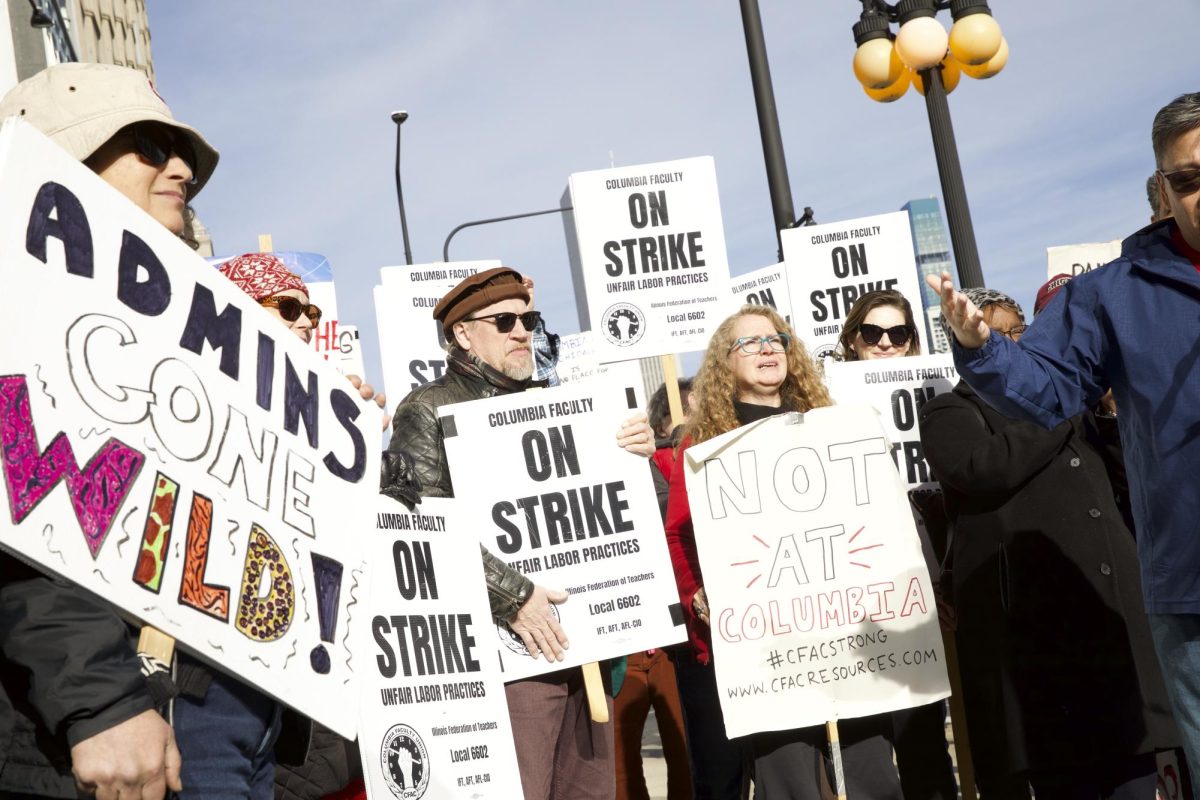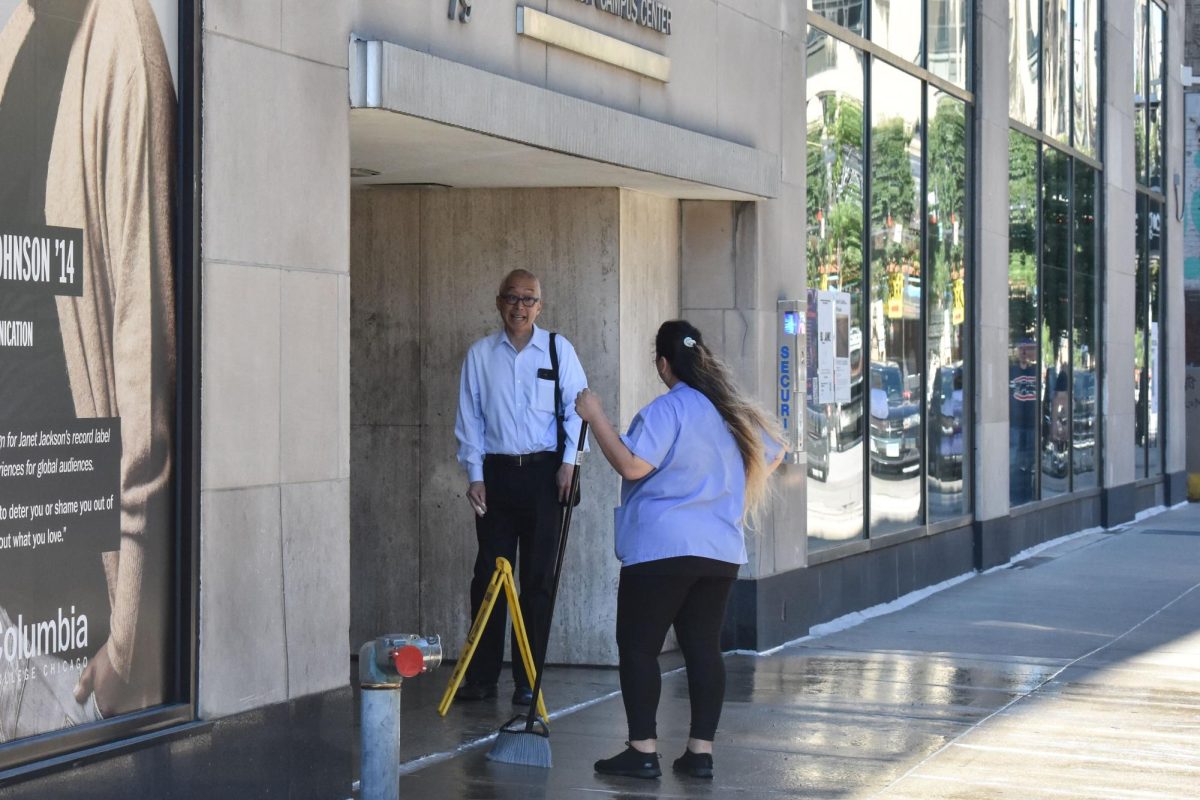Students and faculty are returning to the classroom this week for the start of the spring semester after a historic seven-week strike by part-time instructors that derailed the fall semester and left many on campus with lingering anxiety about the impact of the disruption.
Although a deal was ultimately reached, with higher pay for part-time instructors, teaching guarantees and the creation of a new committee to address course cuts and class size, dozens of students told the Chronicle that the stress of the strike has not entirely gone away. Some students are concerned about promises of tuition credits and what to do about classes that never started back up again. But overall, many are just glad to be back.
“I’m feeling okay. I’m still kind of nervous,” said senior illustration major Aidan Torres.
Matt Akin, a junior marketing major, said that since the strike ended, it’s nice to have some security going into the semester. Yet, he still has some concerns.
“I’m just kind of ready for it to be over a little bit, this coming semester, even though it hasn’t started yet,” he said.
The Columbia Faculty Union, which represented 584 part-time faculty at the start of the strike, walked off the job Oct. 30 over cost-cutting measures the college was implementing to address a $20 million deficit.
Hundreds of classes were impacted each day that the strike went on because the majority of Columbia’s teachers are part-time instructors.
After Thanksgiving break, many of the college’s 221 full-time faculty stepped in to teach in order to keep the semester moving. By then, nearly half of the part-time instructors were no longer honoring the strike.
But the college could not find replacement teachers for all of the classes.
Joshua Chaffee, a senior game design major, said one of his classes, “Japanese III,” did not have a replacement instructor and just stopped at the end of October.
“We had our one teacher and when they left, it was the end of it,” Chaffee said. The professor “felt terrible about it because of the loss of learning … It was rough.”
Senior advertising major Mitzi Santamaria said the college is “not addressing the mess they made.”
“Having instructors step in for a class to end the semester sounds great in theory, but the instructors are entering class with no knowledge of what’s going on because they don’t have access to it,” Santamaria said. “It also made learning difficult because the instructor tries their best to teach with what they know but it feels disconnected with what the student wanted to learn.”
Students have since begun receiving emails regarding promised refund credits for classes impacted by the strike. The college offered a $500 credit per class that was taught by a striking part-time faculty member.
“It’s nice that we got money back for the classes, because I had classes with labs that went online, and it felt silly,” Torres said, referring to their “Environmental Science” class. “ I don’t know what it would have been like, but we just had lectures and I don’t think that’s any way to learn science.”
Eren Calderon, a junior international arts management major who transferred to Columbia, is worried about getting money back from the fall semester.
Coming from a low-income immigrant background, Calderon said they now have second thoughts about coming to Columbia.
“I’m really nervous,” Calderon said. “Besides just starting school here, I’m worried about the reimbursement portion of it. I’m really worried that if I have problems in school moving forward I don’t know what the support from Columbia is going to look like.”
College officials said they won’t know for a while how many students may have left Columbia after the fall semester, choosing not to return because of the strike.
Data from the college’s student retention initiatives does indicate that applications for the Fall 2024 semester are down about 10% compared to last year at this time.
This data is currently provisional as more specific numbers will be provided after census day in the third week of the semester, according to Greg Foster-Rice, associate provost for student retention and also associate professor in the Photography Department.
Brielle Black, a sophomore fashion studies major who works on campus at the New Student Programs office, said new students were particularly impacted by the strike. She is hopeful about a fresh start for them this spring.
“It’s hard because our target audience is new students and freshmen, and they don’t really know the regular flow of Columbia,” she said. “My hope is that as students, we kind of just go back to partying, going back to class and, you know, meeting new friends and networking and getting our work done.”
After her “History of Animation” class was disrupted due to the strike, junior animation major Zadie Ervin is glad the college and union reached a deal.
“I think it’s pretty good that it has ended; it hasn’t really affected me too much,” she said. “I’m going to graduate pretty soon, so I guess I’m not really too worried about how Columbia’s going to be in a couple of years.”
Junior graphic design major Isaac Carter compared campus after the strike to campus after the pandemic and said that communication was unsatisfactory.
“We’re still kind of talking about things, dealing with the aftermath, and the road to recovery isn’t set in stone. I didn’t see any specific measures or emails about how we will try to move on and handle these things in the future,” Carter said.
Kaitlyn Mahan, a first-year who is a double major in journalism and creative writing, said the chaos of the fall semester hasn’t gone away.
“There was so much stress about classes for this spring at least for me during registration,” Mahan said. “I was really stressed because there was only one section of a prerequisite class that I needed to be able to take nearly all other classes in my major, but it all managed to work out in the end just barely.”
Senior animation major Kieran Noble was able to get into all of their desired classes going into their final semester with a “normal” schedule.
When it came to registration the only issue they faced was the portal freezing up or shutting down because of the number of students logged in at the same time. “I would add though that I had a lot of doubts about the validity of this semester since we chose classes weeks before the end of the strike, and I wasn’t sure how many classes, if any, would even be held.” Noble said.
Elías Muñoz, a junior graphic design major, said he is looking forward to being back in the classroom this spring.
“I feel like there are more opportunities to create while being downtown,” Muñoz said. This semester “I hope to get an internship, learn more and create more for myself.”
After getting all the classes she wanted, sophomore journalism major Janiya Williams was happy with her schedule. Looking ahead, Williams said Columbia should listen to staff and students more.
“I’m hopeful that another strike doesn’t happen,” Williams said. “I think Columbia needs to listen to the people who are keeping the school together and stable because we are the glue, as well as the teachers. Hopefully, in the future, when they are expressing themselves and the things that they need, Columbia is paying attention to it and taking it very seriously.”
Additional reporting by Samaher AbuRabah, Olivia Cohen, Avery Heeringa, Roa Khalil, Kate Larroder, Sofia Oyarzun, Lilly Sundsbak, Blake Swanson, Maya Swan-Sullivan, and Lily Thomas.






















